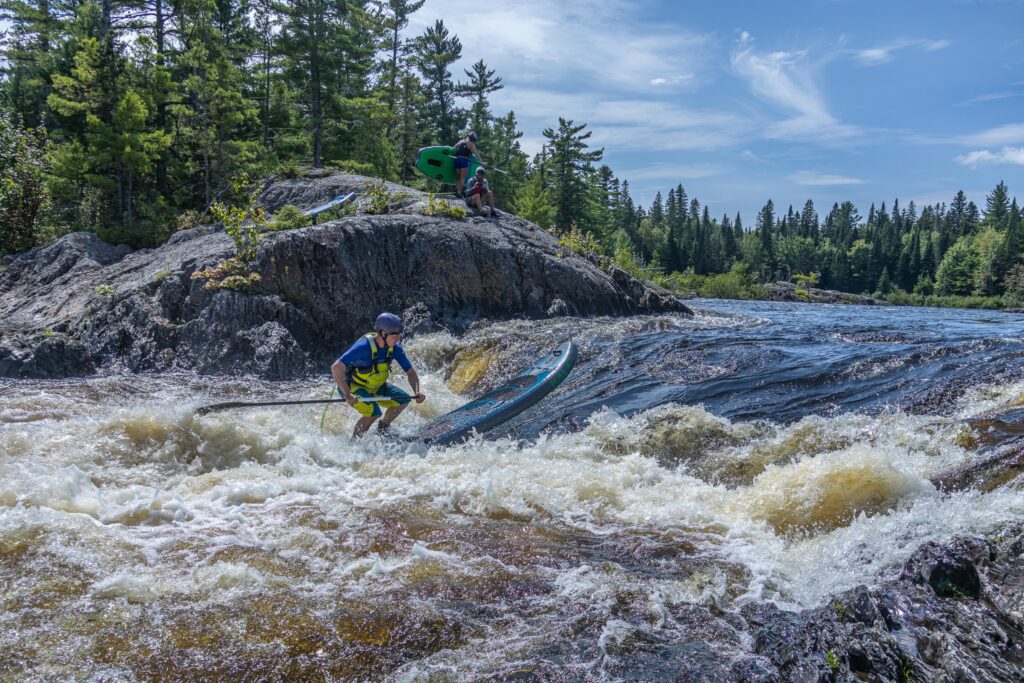Is Height Management Important For White Water SUP?
One of the benchmark skills that some SUP boaters consider to be crucial is height management. In a nutshell, this basically means the ability to move upwards and downwards lowering your centre of gravity (your head) to be closer to your centre of balance (the middle of your stance in relation to the board and your feet). This could be to perform a low brace support stroke, to absorb the impact of waves (much the same as skiing moguls) or possibly to go to one or both knees or god forbid hug the board in prayer to the river gods.
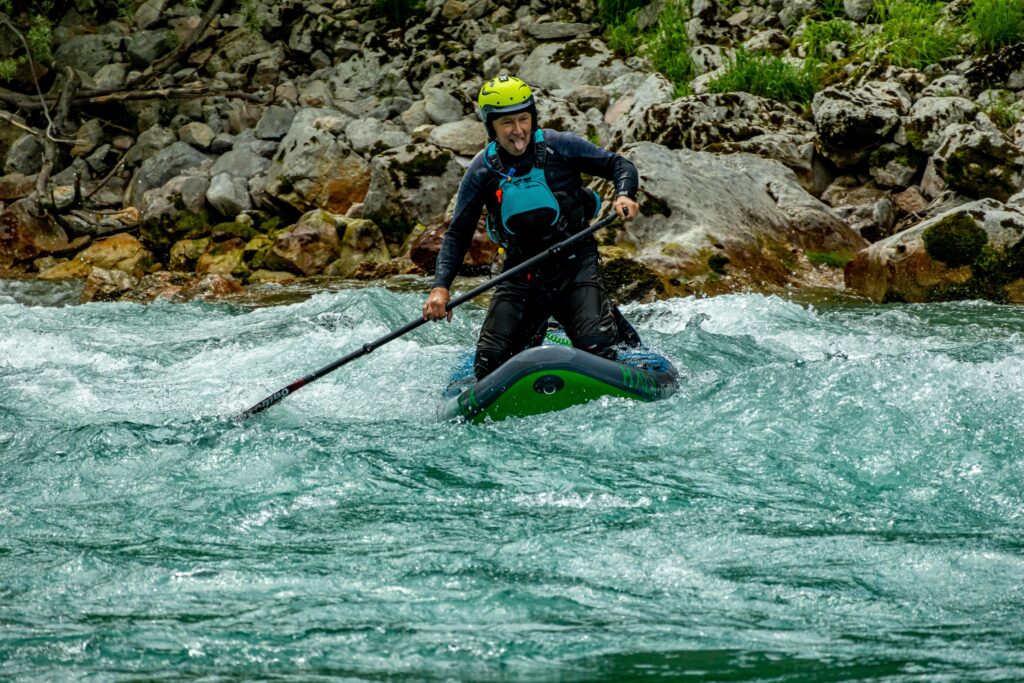
Why it can be useful:
It can be great to improve your balance with the use of a low brace support or even the back brace (long term some paddlers think this may not be great for the shoulders – time will tell) which can stop you going for a swim and help keep you on the SUP – minimising time in the water means more success on the SUP and also less risk involved with swimming, hitting rocks etc.
It can be a great temporary way of stopping you from falling off by touching a knee to a board (some purists will call it cheating – maybe it is but its better than being in the water!) and this can be quickly recovered from easily when only on one knee to return to a standing position.
It can minimise the distance that we fall off from our SUP – falling from a lower height generally means falling closer to your SUP and as such being able to climb back on quicker – this has the added benefit that if you were to fall on something – a rock, another person whatever it might be there is less force generated due to less distance fallen.
It can be a great way of introducing beginners into the sport – most people when they first start white water SUP need to develop the required balance and as such by going to a knee or two or bracing they are bit by bit building confidence and balance in moving water to be able to stand in a short time.
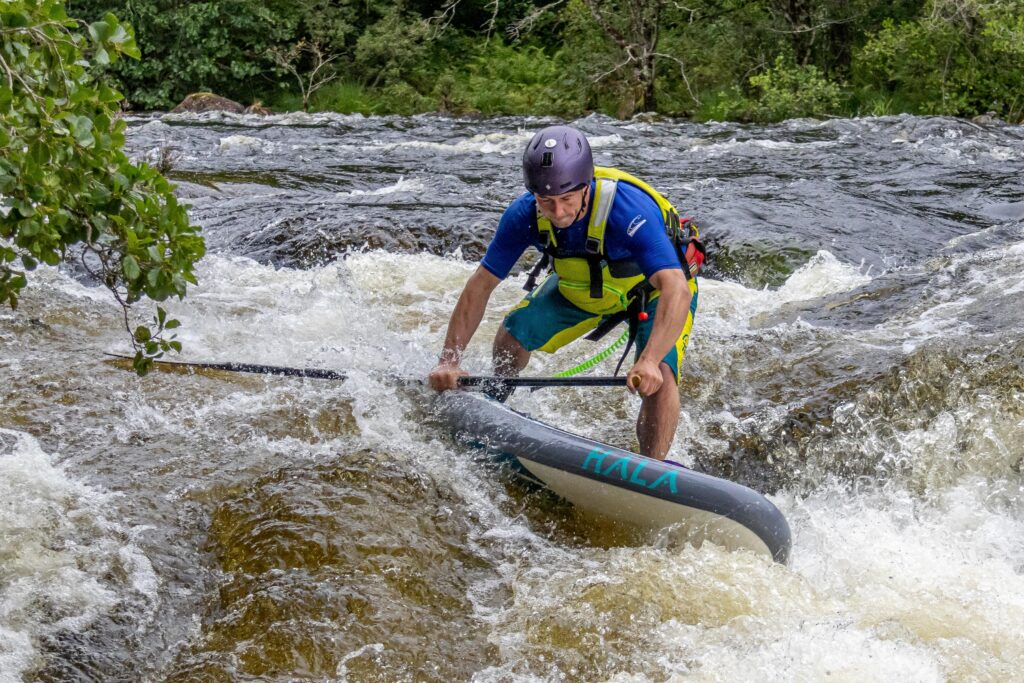
When it can be a detriment:
In big water going down to a knee or both knees i.e. the full version of height management can actually be really serious – the water can come over the nose of your sup and all of a sudden it has a much larger surface area (your entire body) which it can hit and easily knock you off the SUP – when standing it tends to part around your legs and strangely you are actually more likely to stay on the SUP. This seems contrary to what your brain tells you in the moment but it really is the case smaller surface area = less of an impact knocking you off.
Going to 1 knee can also cause significantly more weight on one side of the board making it much less stable and hence more likely to be flipped – this is because you have two points of connection on one side – one foot and one knee vs the other side only having 1 foot. As such around 2/3rds of your weight is on the single edge of the sup and if used incorrectly this can cause more swims and flips. When going to one knee our author recommends that it be a temporary thing and that you try to either stand back up or get the second knee down unless you are wanting more weight on one side of the sup.
You can become dependant on it – our author has seen many people who going to knees end up doing it subconsciously and it can be a hard thing to remove from your paddling once it is in there.
A few keys takeaways for the stance required to maximise the benefit from height management:
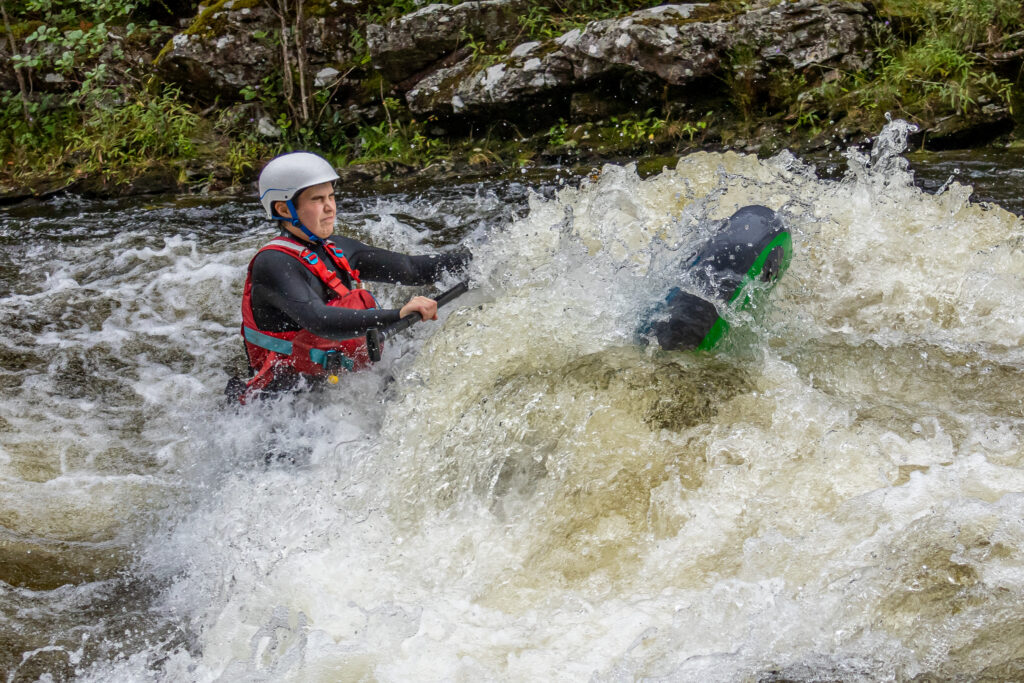
Side by side:
This can be a bit trickier to lower your centre of gravity as far as possible in this stance as you are limited by the width of the board you are on as to what is your optimal width to stand on – on top of that it means going through a wave your legs get hit but the water at the same time/ the board balance impacts on your feet at the same time – this means you naturally move your weight onto your heels or toes at the same time as well and as such are slightly more likely to fall off. But it comes with a huge upside you can swap sides and also cross deck paddle much easier if in a side by side stance.
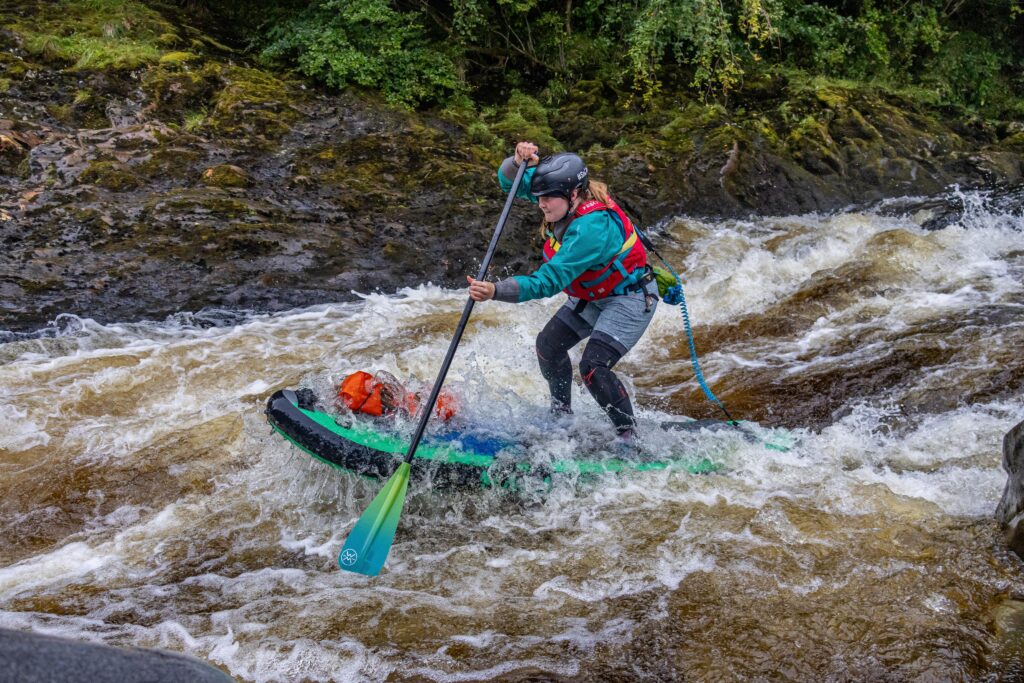
Shoulders width surfing stance:
This is the normal stance for white water paddle boarders and allows you to place your feet the width apart that feels natural to you – normally around shoulders width or marginally wider. Another benefit to this is the ability to rotate your hip and utilise your core to paddle and to stand up from one knee a little easier. But one of the huge benefits to this is the fact that when the water hits your legs it hits them one at a time, or impacts your balance one foot at a time allowing you time to compensate with the other one or possibly lower your centre of gravity to assist as well. As such this is the stance that we benefit most from with regards to height management and is why most people tend to opt for this as their go to stance for moving water.
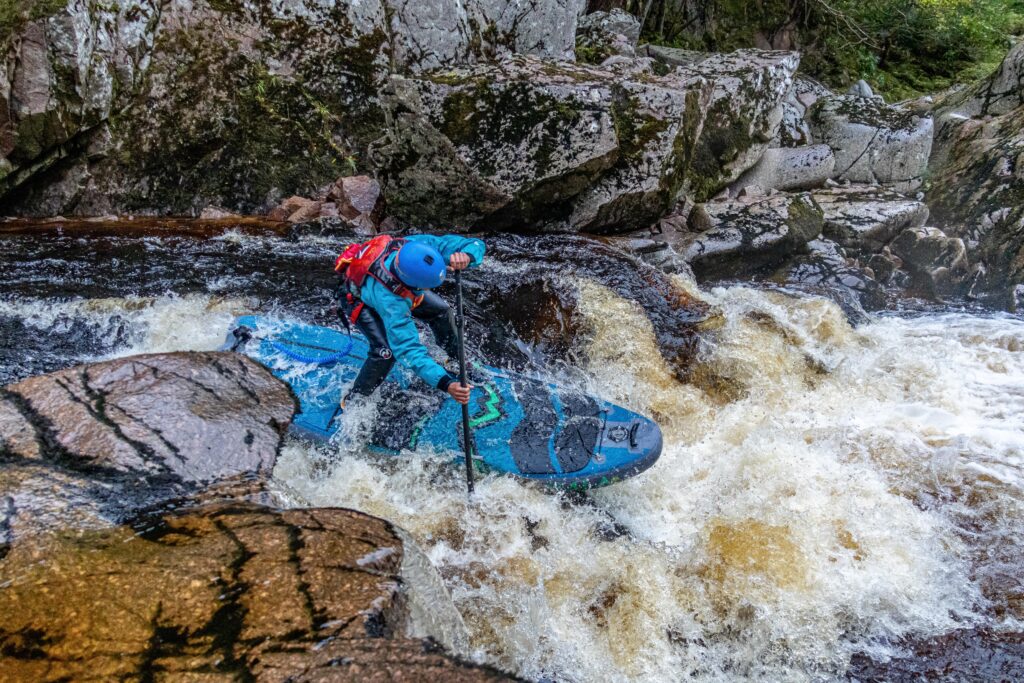
Really wide surfing stance
This is initially the most stable platform but comes with a downside as well – once you are fully stretched out in your legs in some crazy wide stance, it is very hard to lower your centre of gravity any further (unlike the previous stance) as such while initially stable it reduces your ability to counteract what the water does to the SUP and your balance point – so who you lose your balance you are more likely to swim. Big plus is subconsciously it makes you feel more stable and perhaps gives people the confidence to try bigger rapids.
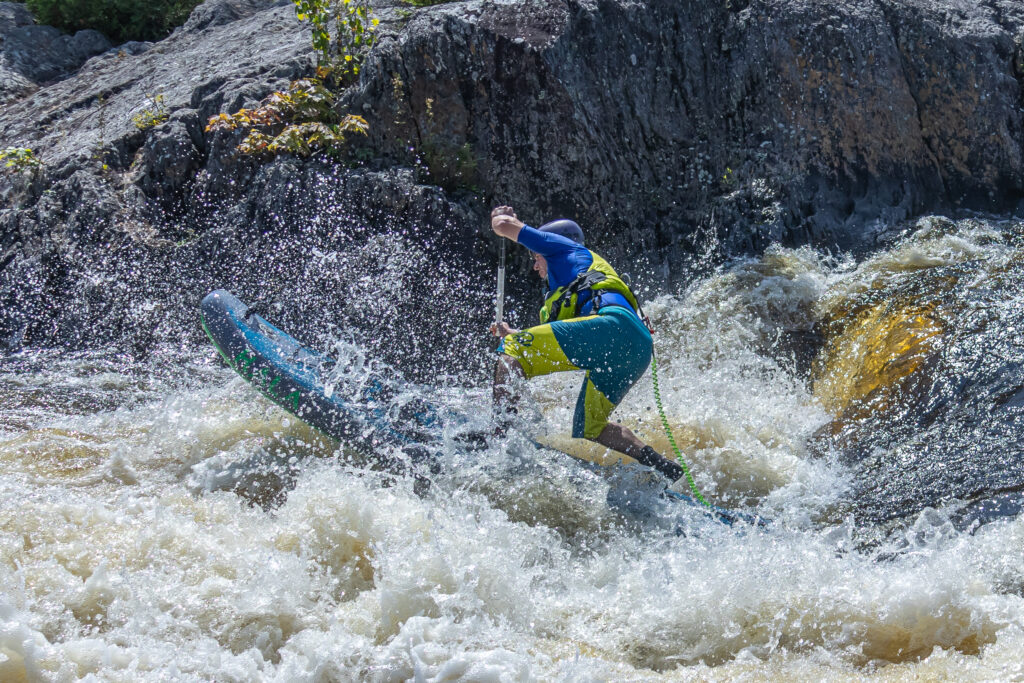
So what should you do/learn from this?
We recommend that is height management is something you re interested in play about with the three stances above and go paddle a rapid/get someone to give you a gentle push to see what happens to your balance in all three stances (make sure a mat or soft landing is below). By doing this, you will find out where your optimal stance is to maximise the ability to lower your centre of gravity to assist your balance.
